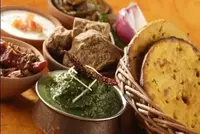The pakistani

The Islamic Republic of Pakistan, which means "land of the pure, " is located in the region of South Asia. Pakistan is currently recognized as the sixth most populous state in the world.
Moreover, 99% of Pakistani residents profess Islam, this is the second Islamic country in the world after Indonesia. Pakistan borders Iran, India, China and Afghanistan.
Such ancient neighbors could not help but leave a deep trace in the culture of the young state of Pakistan, which was formed only in the middle of the 20th century.
However, let's not underestimate the ancient traditions of the indigenous people of Pakistan. Historians have proven that the ancient human civilization of Harappia arose and for a long time existed on the territory of present-day Pakistan.
Much later, Aryan peoples came to this territory. After the great conquering campaigns of Alexander the Great, Aryan culture mixed with the national traditions of the Hellenes. The Kushan kingdom, which arose in the territory of ancient Pakistan, was considered the cradle of Buddhism in that region.
Islam supplanted Buddhism by about the 8th century AD. In the future, there were no other religions in Pakistan. In the 19th century, Pakistan was a colony of Great Britain, it was combined with Indian lands into one territory called British India.
The rich history of the Pakistani people indicates on the one hand the versatility of the cultural traditions of Pakistan, and on the other hand speaks of uniqueness and identity. Most Pakistani recipes are similar to India's national cuisine.
And this is completely unsurprising. Pakistan has long had an Indian community that professes Hinduism. Among the dishes of Pakistani cuisine, you will easily meet such famous Indian treats as Roti, Chapati, Puri and Naan tortillas.
Pakistanis like to make all kinds of curries and eat them with freshly baked tortillas. Pakistani recipes often use legumes as popular in India as lentils. The famous Pakistani Dal or Dhal is made just from lentils according to Indian recipes.
Pakistan is Muslim, so meat, beef or lamb are often used for meat recipes in Pakistani cuisine. Also popular with the people of Pakistan are vegetables with Sabzi spices and the indispensable "Asian bread" rice Chaval.
Pakistani cuisine has adopted the traditions of its Indian sister in terms of cooking and eating all sorts of sauces. No dish of Pakistani cuisine will do without spicy, because of chili peppers and spicy, because of Masala sauce.
Masala came to Pakistan from India. This is the generic name for the seasoning, which consists of a mixture of a variety of herbs and spices. Each hostess may have several of Masala's own recipes. One family is loved sharper, and the other is sweeter, so everyone makes Masala to their liking.
On the streets of Pakistani cities, you will always meet trolleys that have been converted into mobile kitchens. As a rule, Samosi and Tikki are more popular, which are made right before your eyes. Tikka is an open-fire fried chicken meat mostly, sometimes using lamb or beef.
Tikku can be wrapped in a freshly baked tortilla or served with a side dish of rice and a salad of fresh vegetables. In national Pakistani cuisine, barbecue is considered a common dish. The most famous Pakistani kebab is called Shish-kebaba or Shami-kebab. Meat curries of Korma and Sag-ghosh are also worth a taste. Sag-ghosh is an ancient recipe for lamb meat curry, in spinach sauce.
Pakistanis, like all Asians, make incredibly delicious sweets. Usually, nuts, berries, fruits and honey are added to desserts in Pakistani. Pakistan people like to wash down Mitai's famous sweets made of syrup, cream and flour with black tea with cardamom.
 Español
Español Français
Français Português
Português Русский
Русский 简体中文
简体中文 繁體中文
繁體中文 日本語
日本語 한국어
한국어 العربية
العربية Türkçe
Türkçe Қазақ
Қазақ Deutsch
Deutsch Italiano
Italiano Українська
Українська
